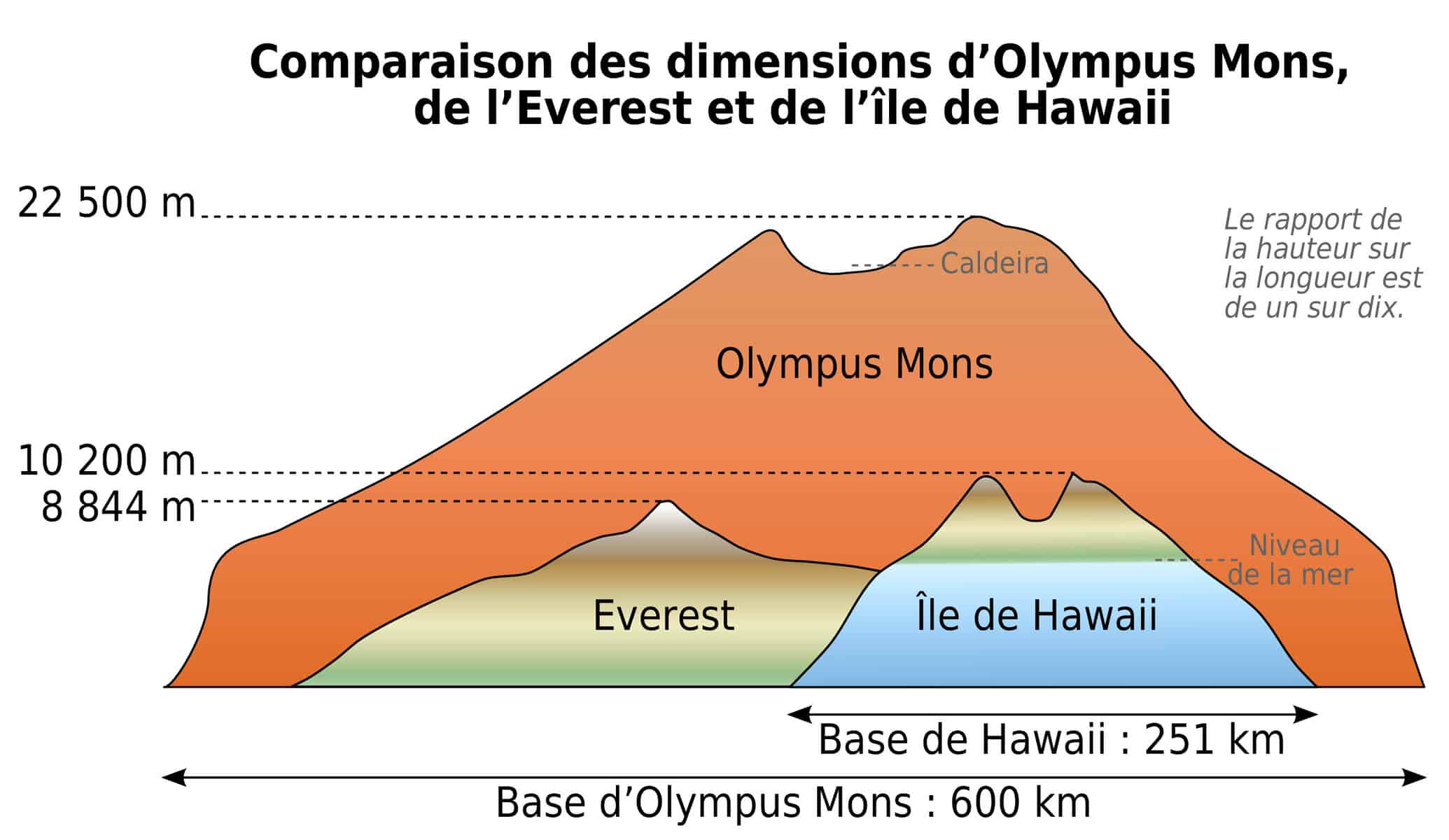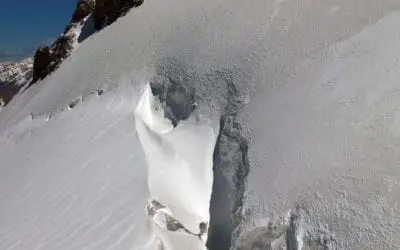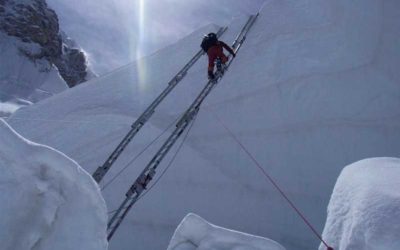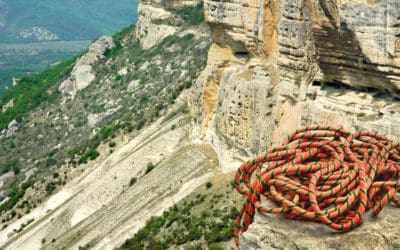
Farouk Zouman leads the team towards the summit, Mt Everest. Photo from Saudi.now
Mountaineering is an epic sport filled with adventure and hair raising stories of crazy adventures and near-misses. In this article, I share some cool mountain climbing facts that you might not have known.
Contents
1. Women who Climbed K2 Were Believed To Be Cursed
The first woman to summit K2, the second highest peak in the world, was Wanda Rutkiewicz. This Polish lady conquered the dangerous peak in 1986. Shortly after this successful expedition, she died while attempting to summit Kangchenjunga.
The same happened for the next four women to summit K2 – all of them either died on their way down from the summit or on their next major climb. This led many to believe that K2 has a curse spelling the death of any woman who climbs it.
The curse has since been broken, though, with many female climbers living to tell the tale of K2 and a host of other successful summits. Spanish-born Edurne Pasaban was the first woman to summit K2 after the curse was broken – she is still alive today and climbs actively.
2. Man in Wheelchair Climbed Mount Kilimanjaro Twice
South African Bernard Goosen climbed Kilimanjaro twice in a wheelchair. His first summit, in 2003, took nine days and his second, four years later, took only six. Goosen was born with cerebral palsy and used a modified wheelchair to climb the mountain.
Mount Kilimanjaro is the highest peak in Africa at 5 895 meters. Because of its relatively low peak, you don’t require any special gear or experience to reach the summit – no oxygen and no alpine equipment.
Essentially, Kilimanjaro is a tough hike with the potential of altitude sickness. This has lured many to attempt its summit, among which are some cool records:
-
A 7-year old successfully summited Kilimanjaro. American Keats Boyd was the youngest person to make it up this mountain.
-
The oldest person to summit this mountain was 86 year old Angela Vorobeva.
-
In 2011, paraplegic Chris Waddell made it up the mountain on a custom-built hand-cycle.
-
Kyle Maynard, a quadruple amputee, reached the summit in 2012 without the help of prosthetics.
-
Karl Elgoff, a Swizz mountain runner, made the fastest ascent of Kilimanjaro in just 4 hours and 56 minutes.
3. Everest Is The Highest Open Grave In The World
There is an estimated 200 bodies currently on Mount Everest, making it the world’s highest open grave.
The fatality rate on Mount Everest is 5%, which means that, over the years, a total of nearly 300 people have died on the mountain.
Since helicopters can’t fly above an altitude of 6000 meters, getting these bodies off the mountain is nearly impossible, so most of them are left on the mountain.
Carrying a body down the mountain requires between six and 10 Sherpas, which is a costly operation and risks the lives of the people involved. In the severe weather conditions faced at that extreme altitude, these bodies freeze, preserving them there until who knows when.

View of Kilimanjaro from Amboseli National Park, Kenya. Picture from © Sergey Pesterev / Wikimedia Commons
4. Matterhorn is Dangerous Because of its Popularity
Matterhorn is a popular peak in Switzerland. While the actual climb isn’t necessarily highly technical or difficult, it does have a rather high injury rate.
This is due to the sheer amount of people trekking up and down the mountain. Tourists higher up the slopes dislodge stones which cascade down onto climbers lower down the route.
5. Mauna Kea is Taller than Mount Everest
Mountains are measured as height above sea level, meaning that Mount Everest’s peak is 8 848m above sea level. If we measure mountains from base to peak, Mount Everest would weigh in at a measly 3000 meters, since the base is around 5000m above sea level.
Mauna Kea in Hawaii measures 10 000 meters from base to summit, which is incredible! However, most of this mountain is below sea level, so it measures 4 207 meters from sea level to peak.

Comparison diagram between Olympus Mons (on planet Mars), the highest mountain in the solar system, and the highest mountains on Earth: Mauna Kea (Hawaii island) and Everest. French version. Photo from © Sémhur / Wikimedia Commons
6. Everest’s First Summit is Shrouded in Mystery
In 1953, New Zealander Edmund Hillary was the first person to officially summit Everest. The Nepalese Sherpa who did this with him was Tenzing Norgay.
They weren’t the first official expedition to attempt this monumental feat, though. In 1924, George Mallory and Andrew Irvine attempted to summit Everest in the first official expedition. They died in the attempt, but it’s not known whether they died on their way up or down the mountain.
In 1999, Mallory’s body was found in the mountain. It is suspected that Irvine carried the camera on this expedition, but his body is yet to be found. Perhaps, if his body is found along with the camera, mountaineering history will have to be rewritten.
7. Annapurna is the World’s Deadliest Mountain
With a fatality-to-summit rate of 32%, Annapurna is the most dangerous mountain in the world. 61 people have died on the mountain while there were only 191 successful ascents.
I have written an article about what makes Annapurna the deadliest mountain in the world. If you wanna learn more you can find my article here.
8. People Got Married at the Summit of Mount Everest
While most people who attempt Mount Everest are happy to just make it to the summit and get back to base camp alive, some people are a bit more ambitious. In 2005, Pem Dorjee and Moni Mulepati became the first two people to get married at the summit of Mount Everest. Talk about setting a high standard.
9. You Enter the Death Zone at 8000m
At an elevation above 8000 meters, there is only about a third of the amount of oxygen that you would find at sea level. This is not sufficient for humans to breathe, which is why they call this the “death zone”.
Mountaineers venturing that high use oxygen canisters to supplement the atmospheric oxygen, allowing them to breathe in enough oxygen to continue climbing.
Without sufficient oxygen, climbers can black out, which is deadly in those extreme conditions. Most people who died on Everest, died in the death zone.
10. There’s No Agreement on the Definition of a Mountain
Yup, that’s right. Scientists can’t seem to agree on exactly what a mountain is. The British and Americans state that a mountain should be at least 300 meter above sea level, while their peers in Europe say that mountains are at least 900 meters above sea level. Unfortunately, this disqualifies an enormous bunch of landmasses that we normal people respect as mountains.
In 1936, Roderick Peattie, a British naturalist, suggested that mountains should not be limited to the above narrow definition. Instead, mountains are distinguished by the impact they make on us when we see them, letting our imaginations run wild and luring us to adventure. That sounds much more like to mountains we know and love!
Written by Felix

About me
Hi! I’m Felix. When I’m not spending time out in the mountains, I like to write about my hobbies. That is how Mountain Homies was created. On this site, I try to gather all the juicy information about Mountaineering that I have learned since I started. Happy adventures!
Related Articles
3 Ways to Spot and Reveal a Crevasse (And Avoid It)
So, how do you spot a crevasse and – more importantly – avoid falling into one? In this article, I will have a look at what crevasses are and how to detect them…
3 Clever Ways of Crossing A Crevasse
When you’re mountaineering in snow country, you will undoubtedly encounter some crevasses. These are scary, since you don’t always spot them…
Mountain Climbing vs Rock Climbing: 5 Biggest Differences
The key differences between rock climbing and mountain climbing are the gear requirements, environmental risk, geographical locations, weather and…
Stay Up to Date With The Latest News & Updates
Join Our Newsletter
The owner of this site is a participant in the Amazon Services LLC Associates Program, an affiliate advertising program designed to provide a means for sites to earn advertising fees by advertising and linking to amazon.com.



